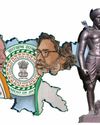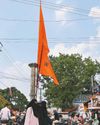How much has the MDMA progressed in its probe into Rajiv Gandhi’s killing in two decades?

The Multi-Disciplinary Monitoring Agency (MDMA), a unit of the Central Bureau of Investigation (CBI) probing the 1991 assassination of former prime minister Rajiv Gandhi, seldom makes headlines. Formed in December 1998 to unearth the larger conspiracy behind the suicide bombing, the agency has been around for the past two decades—working stealthily, away from the public eye. It was, however, in the news again during the bitter CBI reshuffle this month when the bureau’s No. 4, joint director (policy) Arun Kumar Sharma, was shunted there.
Sharma’s posting, considered the fallout of internal strife in the premier investigating agency, raises questions about the MDMA itself. The most obvious question is why is this little-known agency wreathed in secrecy and packed with experts drawn from the CBI and other agencies taking so long to crack a puzzle it was tasked to solve in two years? Why have the two years become 20 without a charge sheet, while many key suspects and witnesses are dead already?
Millions can recall the moments when a bespectacled woman bent down to touch Gandhi’s feet during an election rally in Sriperumbudur on May 21, 1991, and detonated an RDX-rigged belt concealed under her dress. The explosion killed the former PM, the suicide bomber of the Liberation Tigers of Tamil Eelam (LTTE), and 14 more people.
Detectives arrested several suspects; many of them were convicted and a commission under Justice M.C. Jain was formed to unravel the conspiracy behind the murder. The plot had thickened by then with the names of a god man, a political rival of the Congress, Khalistani militants, an arms dealer, and longtime Tamil Nadu chief minister M. Karunanidhi thrown into the mix. But only three people could perhaps tell the truth—LTTE chief Prabhakaran and his sidekicks, Kumaran Pathmanathan, alias KP, and Kittu.
この記事は Outlook の November 12, 2018 版に掲載されています。
7 日間の Magzter GOLD 無料トライアルを開始して、何千もの厳選されたプレミアム ストーリー、9,000 以上の雑誌や新聞にアクセスしてください。
すでに購読者です ? サインイン
この記事は Outlook の November 12, 2018 版に掲載されています。
7 日間の Magzter GOLD 無料トライアルを開始して、何千もの厳選されたプレミアム ストーリー、9,000 以上の雑誌や新聞にアクセスしてください。
すでに購読者です? サインイン

Trump's White House 'Waapsi'
Donald Trump's victory in the US presidential election may very well mean an end to democracy in the near future

IMT Ghaziabad hosted its Annual Convocation Ceremony for the Class of 2024
Shri Suresh Narayanan, Chairman Managing Director of Nestlé India Limited, congratulated and motivated graduates at IMT Ghaziabad's Convocation 2024

Identity and 'Infiltrators'
The Jharkhand Assembly election has emerged as a high-stakes political contest, with the battle for power intensifying between key players in the state.

Beyond Deadlines
Bibek Debroy could engage with even those who were not aligned with his politics or economics

Portraying Absence
Exhibits at a group art show in Kolkata examine existence in the absence

Of Rivers, Jungles and Mountains
In Adivasi poetry, everything breathes, everything is alive and nothing is inferior to humans

Hemant Versus Himanta
Himanta Biswa Sarma brings his hate bandwagon to Jharkhand to rattle Hemant Soren’s tribal identity politics

A Smouldering Wasteland
As Jharkhand goes to the polls, people living in and around Jharia coalfield have just one request for the administration—a life free from smoke, fear and danger for their children

Search for a Narrative
By demanding a separate Sarna Code for the tribals, Hemant Soren has offered the larger issue of tribal identity before the voters

The Historic Bonhomie
While the BJP Is trying to invoke the trope of Bangladeshi infiltrators”, the ground reality paints a different picture pertaining to the historical significance of Muslim-Adivasi camaraderie